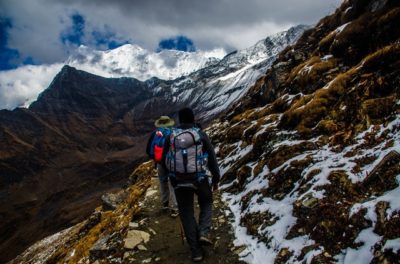Most charities offer trekking challenges, so it’s no surprise that trekking is becoming ever more popular. Prepare for your trek properly with our top 10 trekking tips.
The daily distance, elevation, descent, and altitude of the trekkings can be drastically different, but both require rigorous preparation to ensure your trekking journey reaches limits. Our 10 tips, including hiking, hygrometry, hiking and special trekking services, can provide you with a good preparation for your trek, so that after the first day of your walk you do not have nursing blisters and sore legs.
#1 – Start your Trekking Early
It is never too soon to start your hiking program, even if you have a 12-month hiking trip. Seek to develop your strength and health and to adapt the body to its current needs. That way, by trying to do too much too soon, you can enjoy your trekking training and avoid risk of injury.
#2 – Choose The Correct Gear For Your Trek
It is true that some technology for trekking clothes like best quality Tactical pants and particularly useful for lightness, wind-resistance, impermeability and wicking (GoreTex, Fleece, Polartec, etc.). We suggest, however, to focus on the basics: comfortable, respiratory, light, easy-to-lay clothing.
#3 – Don’t Forget Your Walking Socks
It is easy to forget the best kind of socks to wear with a lot of footwear focus. You’ll get ruined by the right boots with the wrong pair, so you can wear the same socks when you try boots. Select materials such as Coolmax that are sweat-wicking or consider the new Gore-tex range that sweats but is water-resistant.
#4 – Build Leg Strength With Gym Work
Beat strength is the key to your path, so consider adding workouts such as leg raises and weighted pants and squats, in addition to a walking workout which will strengthen your legs.
#5 – Build Your Walking Training
The foundation of your training program is walking training, and it is crucial that you gradually build on the distances you take on your trek. Beat strength is the key to your path, so consider adding workouts such as leg raises and weighted pants and squats, in addition to a walking workout which will strengthen your legs.
#6 – Train on the same terrain
Walking is important, but it is also vital that the situations you must encounter be imitated as closely as possible. Seek to practice in the same area as your hiking spot. For instance , try some weekend scrambling for a trek that includes mountain climbing. Furthermore, practice your footwear and clothing in the same way and experiment with a charged backpack — your speed over the ground changes significantly.
#7 – Use your backpack to practice
You should obviously carry snacks, beverage and maybe more, so it is necessary to pick your pack. Check for models with adjustable chest and waist brakes to place the models properly on your back and to prevent adjusting the load with external compression belts. More specialists have fluid on-site removable bladders, but remember that water and washing facilities might be limited, which makes sterilization difficult. Practice the weight and location of your bag (loaded) as part of your preparation.
Fit to trek
The easier your hike is the fitter you are before you leave. Time and effort in reaching your hiking location, so that it makes sense, through good form and a suitable kit, to make the most of your trip. Not only is your path of life well organized, but you can get more from your trekking experience by following the tips above.



